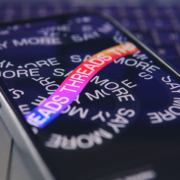Advice to the next gen of marketing creatives: the power of failure
Advice to the next gen of marketing creatives: the power of failure
By Janet Barker-Evans, AbelsonTaylor Group
Nobody wants to fail anymore, especially those who are starting out in their career. Somehow, it’s seen as a bad thing and not as the useful tool that creators have always needed to succeed. We’ve all heard the Thomas Edison quote, “I have not failed. I’ve just found 10,000 ways that won’t work.”
Taking risks, making bets, and failing in our attempts is how we develop better ideas, products, and thinking. In fact, I would argue that failure is the only platform for success.
If you’ve ever seen a junior art director creating a layout on their computer, then you have seen the endless iterations that unfold as images are moved, typography is placed and rejected, and copyfitting is adjusted and readjusted. Likewise, copywriters write endless headlines and subheads, mixing and matching until the message is just right. Even after the initial ideas are settled on, editing and adjustments continue as improvements create excellence.
Good creative directors can always tell the fast effort from the best effort.
Creatives new in their careers might be tempted to cut corners and present their first or fastest work to their creative director. But experienced art directors can spot this from a mile away. We’ve been trained from years of failures to know that you can’t stop until you’ve failed your way into something fabulous. And we know the thrill of that “eureka moment” when the brilliance emerges.
Maybe the problem is the word “failure.” It can seem like an end, versus a necessary step along the journey, as if the state of failure itself is permanent. That’s it – you’ve failed, case closed. The exhilaration for me has always been the rise after the fall – turning my attention from what I’ve learned in a failure to the next potential solution to hopefully see a problem solved. The joy of taking the broken pieces of the failed attempt and reassembling them into something new and different.
We need to unlearn what we think failure means.
Maybe it’s the hyperfocus students place on grades that contributes to this. As an adjunct professor, I often have students ask me what they need to do to get an “A” — versus what they need to do to learn something. The focus is on the assessment versus the learning. Obviously, we need a way to assess learning, but I like to make the failures part of the curriculum, too. Normalizing the failures along the way and treating them like lessons helps to destigmatize and legitimize the entire process of iteration.
AI gives us a new opportunity to take on failure at a rapid pace.
I’ve failed countless times in getting my GPTs and my Adobe Firefly to create the desired output. Because this technology is novel and experimental, we are all quite comfortable laughing at the attempts and sharing the bizarre outputs with each other. It’s probably because we can blame the “failure” on the AI and not on ourselves.
But imagine if we embraced all failures more openly on a regular basis, in every forum, and we consistently used it as a way to share ideas on how to move on from failure to succeed. In the end, failure isn’t a mark of defeat but a badge of courage. It’s a testament to our willingness to try, to innovate, and to push beyond our limits. So, let’s rewrite the narrative. I encourage the next generation of marketing creatives to celebrate their failures as stepping stones and recognize that every misstep and mistake brings them one step closer to brilliance.











